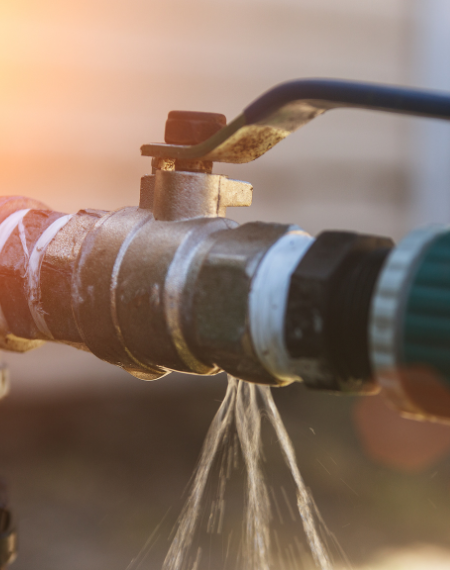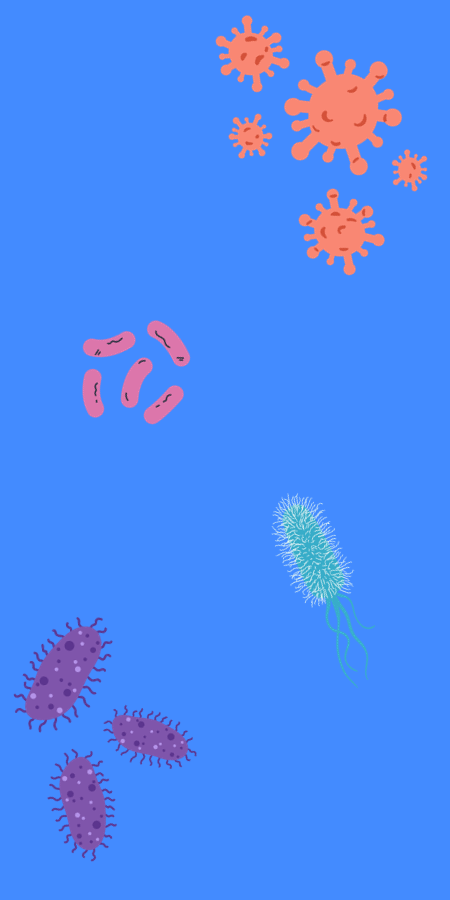 Free delivery on orders over £75 ex VAT
Free delivery on orders over £75 ex VAT Free click & collect from branches nationwide
Free click & collect from branches nationwideA water system is a network of pipes and coils that provides hot and cold water around properties, typically heated by hot water cylinders or a central heating boiler.
The water is provided from the mains public water supply like a river or a private well, and as homeowners, we use this water daily to drink, wash tableware, take showers and even cook.
Over time, after continued use, water systems can become contaminated with minerals and other particles that can severely impact the system's efficiency. It can also provide a risk to our health - if left unmanaged, developing bacteria and other viruses can lead to serious health problems such as Legionnaires' disease.
As a leading supplier for water safety professionals in the UK, the experts at City Plumbing have compiled a list of the 5 most crucial steps to perform when keeping your hot water system free from contaminants.
You’ll learn how to keep your hot water system running efficiently, and how to keep water safe. As an added bonus, by performing the following steps you’ll learn how to increase the longevity of your appliances, saving you money on expensive maintenance costs.
Step 1: Check Water Composition
It's always recommended to check your local water composition so you can get a good understanding of the condition of the water being supplied to your property.
Whilst chloride levels in the water can significantly impact the system, there are a few additional factors to be aware of that can have a significant impact:
- Water Hardness can lead to the buildup of limescale in the pipes and appliances, which can severely reduce efficiency, making washing clothes and tableware difficult. (Live in a hard water area? Read about water softeners here)
- pH Level is a measurement of the alkalinity or acidity in the water. High pH measures can damage pipes and appliances and make water taste unpleasant.
- Turbidity is a measure of the cloudiness of the water. Turbid water can contain sediment, algae and other particles, leading to clogged pipes that can damage appliances. This can also make drinking water taste bad.
- Organic matter can come from various sources, including plants, animals and sewage. This can make drinking water taste bad and is a breeding ground for bacteria.

Step 2: Control Bacterial Growth
Over time, stagnant water can be left in your mains water supply, leading to the risk of Legionella growth. To reduce this risk, remove any dead ends of your pipework and flush out infrequently used outlets such as shower heads and taps at least weekly.
It's good to descale shower heads and hoses at least quarterly, and it's recommended to clean cold-water storage tanks periodically.
If you have a hot water cylinder, you can drain the water from your cylinder to check for debris or any signs of corrosion.
Another primary method to help against the risk of Legionella is by using temperature control. You can easily do this by:
- Storing water in hot water cylinders at 60°C or higher
- Make sure hot water is distributed at 50°C
- Cold water should be stored and distributed below 20°C
You can also specifically design hot water systems to also help against Legionella growth by:
- Keeping pipework as short and direct as possible
- Providing adequately insulating pipes and tanks
- Using materials that do not encourage the development of Legionella
- Prevent contamination by avoiding installing tanks with lids and insect screens
By following these points, you can reduce the risk of Legionella in your hot water system and also keep it free from any other impurities and contaminants. We have also put together a helpful list of Hygiene Products To Help Prevent Legionella to continue to keep our waterways clean and sanitised.


Step 3: Water Filters
Water filters are a great way to remove contaminants, such as carbon debris and microorganisms, from the water system on your property. They are highly effective filters that can capture water-borne pollutants and reduce the risk of damaging boilers and other appliances.
They are also helpful by removing other sediments and particles that can build up over time in hot water systems, ultimately leading to reduced efficiency.
Chlorine is used in drinking water to kill bacteria however it can have a foul smell and taste. Water filters can also be used to reduce the concentration of chlorine, making water taste better and reducing the risk of irritation to the skin and eyes while still removing harmful bacteria.
Step 4: Water Softeners
If you live in an area with hard water, you may want to consider using a Water Softener. Water Softeners use a process called ion exchange that removes impurities like calcium and magnesium from hard water using the salt provided in the tank.
The calcium and magnesium in the water can accumulate in your water system over time causing limescale buildup that can reduce the efficiency of your appliances and make your water cloudy or discoloured.
Water Softeners can remove these minerals from the water, preventing damage to your hot water system and improving the quality of the water. Additionally, Water Softeners can also help prevent the growth of Legionella.
You can read more about Water Softeners and how Water Softeners are becoming an essential part of homes across the UK. Increasing environmental awareness and how to save money and increase long-term sustainability.
Step 5: Draining your plumbing system
Regularly flushing out your plumbing system is a great way to eliminate waterborne germs that can accumulate and reproduce in the pipes, causing illness if left untreated. To ensure your system stays healthy, simply flush it out every so often by following these easy steps:
- Shutting off the water valve
- Open all sinks in your property so that the water starts running
- Open the lowest sink in your property, typically the kitchen sink
- Open both the shower and bath taps so that the water begins to run
- Flush all the toilets in your property
- Leave your taps continually running until the flow of water stops

It's always important to remember to keep your water system free of harmful substances to protect the health and safety of you and your family, as well as prolong the lifespan of your system.
By following these five crucial steps, you can ensure that your hot water is clean, free from contaminants, safe to use, and that your system will remain functional for a long time.
For more information on water softeners (including why they’re beneficial and how to find the right one for your home) take a look at our water softener guide.
If you require further help & advice, then get in touch with one of our experts or use our branch locator to visit your local branch.
Other articles

How to install a Water Softener: Step by Step
10 Aug 2023 ・ 5 mins

How to Maintain a Water Softener - In 5 Easy Steps
05 Sep 2023 ・ 4 mins

World Water Week 2023
21 Aug 2023 ・ 5 mins

How to spot a water leak - 10 easy ways
17 Jul 2023 ・ 7 mins

